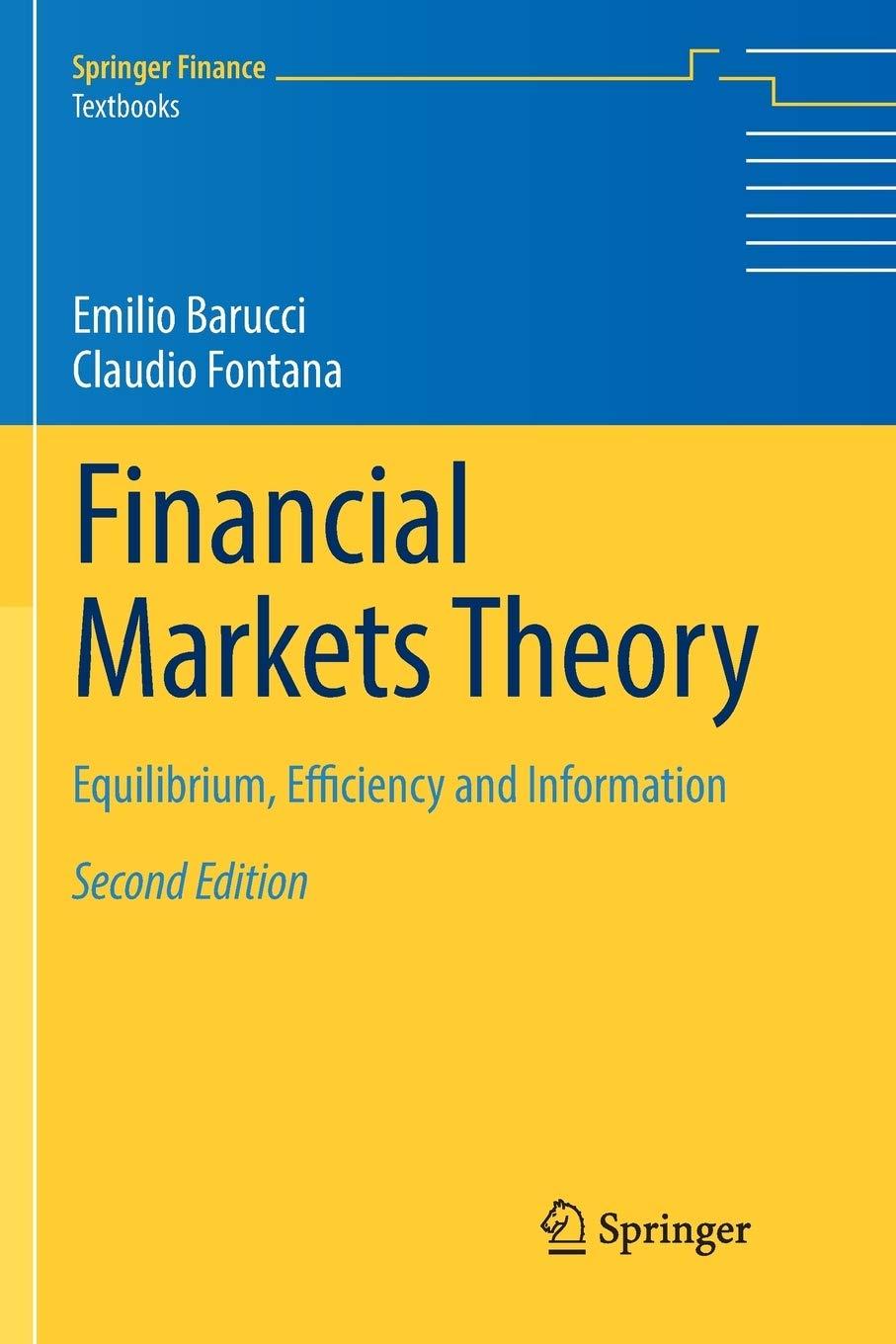Consider the setting of the Modigliani-Miller economy described at the end of Sect. 4.4, with an unleveraged
Question:
Consider the setting of the Modigliani-Miller economy described at the end of Sect. 4.4, with an unleveraged firm generating revenues \(V_{1}\) at date \(t=1\) and, as in (4.62), denote by \(r^{\text {un }}\) the expected return on the shares of the unleveraged firm. Consider then a leveraged firm generating the same revenues at date \(t=1\) but partly financed by debt with nominal value \(K\). As in (4.62), we denote by \(r^{\text {lv }}\) and \(r^{\mathrm{d}}\) the expected rates of return on the stock and on the debt, respectively, of the leveraged firm. Suppose that the CAPM holds for the stock of the unleveraged firm, the stock of the leveraged firm and the debt (bond) of the leveraged firm, with respect to some market portfolio with expected rate of return \(r^{m}:=\mathbb{E}\left[\tilde{r}^{m}\right]\) and a risk free asset with return \(r_{f}\). Show that the beta coefficient of the stock of the leveraged firm (denoted by \(\beta_{\mathrm{lv}}\) ) can be expressed as a linear combination of the beta coefficients associated to the stock of the unleveraged firm and to the debt (denoted respectively by \(\beta_{\text {un }}\) and (\beta_{\mathrm{d}}\)).
Step by Step Answer:

Financial Markets Theory Equilibrium Efficiency And Information
ISBN: 9781447174042
2nd Edition
Authors: Emilio Barucci, Claudio Fontana





